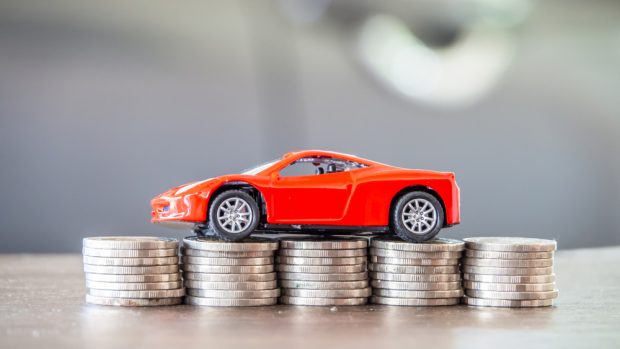 Source: Shutterstock
Source: Shutterstock
Cox Automotive has revised its forecast for the year, but not by much.
In January, it forecast total new and used car sales would fall by less than 1%. Now it's forecasting a sub-1% rise.
Recommended For You
"That sounds like a big swing from expecting a down market to now an up market. The strong start to the year provided most of that momentum," Chief Economist Jonathan Smoke said in the Atlanta-based group's forecast call Monday.
 Jonathan Smoke
Jonathan Smoke "And, hey, to be fair: Plus or minus 1% is not statistically significant," he said. "So let's just call the year as 'likely to be flat.'"
Moreover, beating 2022 is a low threshold: New and used car sales fell about 10% from 2021 to 2022.
Supply constraints for both new and used vehicles, along with higher prices and interest rates will keep a lid on sales, Smoke said.
In one year, the Federal Funds Rate has gone from zero to just 25 basis points below its prior peak of 5.25% in 2006.
Smoke said interest rates on auto loans have risen by an average of 3 percentage points in the last year. From January to late March, rates have risen 91 basis points to almost 9% on new cars, and risen 162 bps to 14% on used cars.
Smoke said employment conditions, wages and buyer ability are healthy.
Smoke said he gets a lot of questions about whether there is a brewing crisis of repossessions, but he said he isn't seeing one.
"While we are seeing clear evidence of stress in delinquencies, defaults and repos are far from even a normal rate of occurrence," Smoke said.
The rate of severe delinquencies (60 days or more late) rose last year for all borrowers and for subprime borrowers, "and by the end of the year were at historically high rates for both."
Delinquency rates have continued to rise this year, and in March have been at a new high of 1.9% overall and record high of 7.3% for subprime borrowers.
"That shows stress, but I do believe the potential negative impact on credit and the auto market more broadly is less severe than it was before the pandemic or back to the Great Recession," Smoke said.
"However we would obviously see more stress if the Fed pushes us into a recession," he said. "But so far, defaults are not following the increase in delinquencies."
Auto loan originations rose in January and February, but lenders tightened credit in March, Smoke said.
In January, Cox forecast used car sales by dealers would fall 1% to 18.9 million this year. But with "robust" sales this winter, used retail sales are now expected to rise 0.5% to 19.2 million.
New cars had an especially strong first quarter. New cars sold at a seasonally adjusted annual rate of 15 million from January through March, up 5.8% from a year earlier and up 4.3% from the fourth quarter.
 Charles Chesbrough
Charles Chesbrough Senior Economist Charlie Chesbrough said the first quarter sales boosted the new car forecast for the year to 14.2 million, up 3% from 2022.
"This is a surprisingly strong start given all the bad economic news," Chesbrough said. "This strength won't last over the course of this year."
Affordability is a major limit. The average new car price in March was nearly $49,000, up 5% from a year earlier.
Add higher interest rates, and the average loan payment in March was $784, up 29% from March 2020 when the COVID-19 pandemic began. That translates into annual increases of 10% per year, compared with pre-pandemic average increases of 3% to 4%.
© Touchpoint Markets, All Rights Reserved. Request academic re-use from www.copyright.com. All other uses, submit a request to [email protected]. For more inforrmation visit Asset & Logo Licensing.







